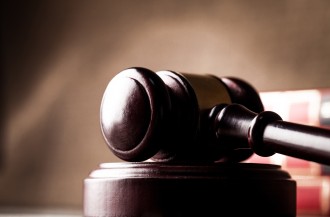
November 27, 2017
PTAB Provides Guidance on Motions to Amend
Since the Federal Circuit’s complicated, 5-opinion decision regarding motion to amend practice in Inter Partes Review proceedings, we have been awaiting developments that will teach us what life in a post-Aqua Products world will look like. We received our first such development in a memorandum from the Chief APJ, David Ruschke, providing “Guidance on Motions to Amend in view of Aqua Products.”
At threshold, the Patent Trial and Appeal Board’s guidance starts with the only true holding from the Aqua Products case, that the burden of proving patentability no longer should be placed on Patent Owners. Practically speaking, this shift in burden to the Petitioner seems to eliminate the burdensome hurdles to a successful motion to amend that the PTAB has developed in its decisions, starting with Idle Free.
Instead, a Patent Owner must only meet the requirements of 35 U.S.C. § 316(d) and 37 C.F.R. § 42.121 (IPR)/42.221 (PGR). Below is a checklist of the requirements from those sources that should lead to a motion to amend that is considered on the merits by the PTAB:
- Patent Owner must confer with the Board before presenting a Motion to Amend;
- The Motion to Amend must be filed no later than the filing of a Patent Owner Response;
- The Motion to Amend must only propose a reasonable number of substitute claims (the presumption being that only one substitute claim would be needed to replace each challenged claim);
- Any amendment(s) to the claim(s) must respond to a ground of unpatentability involved in the trial;
- The amendment(s) must not enlarge the scope of the original claims;
- The amendment(s) must not introduce new matter, including:
- Setting forth the support in the original disclosure for the patent for each claim that is added or amended; and
- Setting forth the support in an earlier-filed disclosure for each claim for which the benefit of the filing date of the earlier filed disclosure is sought;
- The Motion to Amend must contain a claim listing, clearly showing any changes (such listing may be presented as an appendix to the motion); and
- Patent Owner must comply with its duty of candor, including providing the PTAB with any information of which Patent Owner is aware that is material to the patentability of the substitute claims (if such information is not already of record).
If these requirements are met, the Board will determine patentability by a preponderance of the evidence, based on the entirety of the record, including any opposition by the Petitioner.
Lastly, it is notable that, for pending Motions to Amend, the PTAB’s guidance indicates that the Board “generally will permit” supplemental briefing regarding patentability, if requested.
We can see the new Motion to Amend frontier taking shape. Now it’s onto the first PTAB decisions and (probably) on to the Federal Circuit another time or two.

































